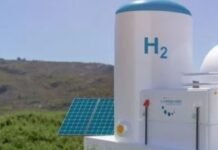Oceans could soon turn into an abundant supply of fresh drinking water, thanks to a sustainable and affordable desalination technology being developed by scientists. The new technology will use solar power instead of reverse technology to desalinate ocean water.
Desalination involves extracting mineral components from saline water. It is the process of removing salts and other minerals from sea water. About one third of the world’s surface is covered by oceans yet according to lifewater.org, roughly one in ten people lack access to clean drinking water.
Scientists are working with Nanotechnology Enabled Water Treatment (NEWT) to develop inexpensive, sustainable water-treatment systems, known as membrane distillation.
The desalination technique can work without electrical power whereas Reverse Osmosis (RO) uses a lot of electricity and needs quality infrastructure to keep the pumps running. This is beyond the capacity of the poor communities living near oceans.
Also Read: Mombasa County to get new desalination plants
The reverse osmosis process involves pressure being applied to water, pumping it through a semi-permeable membrane designed to remove salts and minerals from water. The pumps used to induce the pressure are expensive to make, transport and operate hence the technology is costly and higher for water with high salinity.
Solar powered
The Membrane distillation technology is powered by heat. Saline water is injected with heat from various sources; this can include waste heat produced other industrial processes. The water flows into a heated membrane, evaporation takes place and the water vapour diffuses through the membrane as condensation takes place on the cold side, while the salts remain on the hot side.
The hot side of the membrane is coated with carbon black nanoparticles which absorb light and convert the resulting energy into thermal energy, which heats the water and enables desalination to take place. The process is called nanophotonics-enabled solar membrane distillation (NESMD) and can be fully powered by the sun.
In the forthcoming trials, scientist’s expectation is to desalinate 10 litres of water per hour, an upward increase from the 6 litres desalinated in the initial tests, meaning that a square metre of membrane could provide as much as 240 litres of water in a day.





